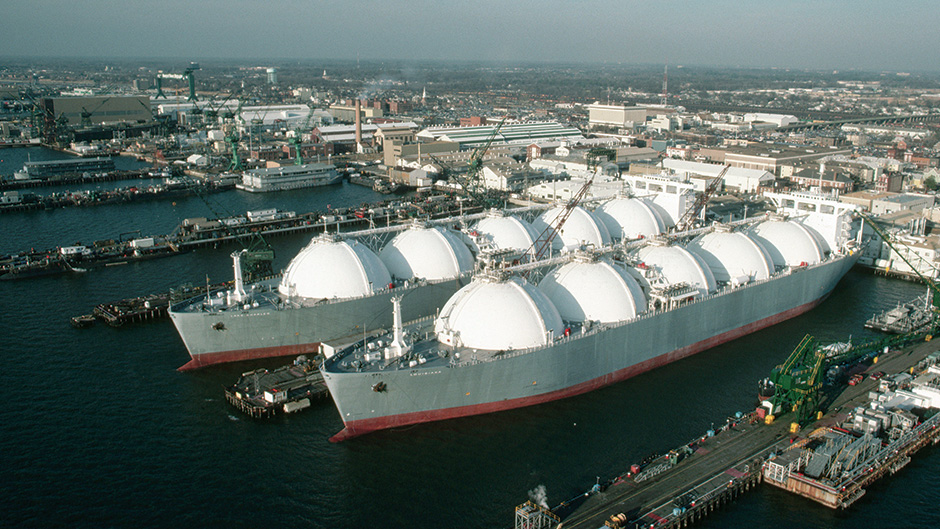In a development that received little attention from the media, the US Department of Energy’s Office of Fossil Energy (OFE) quietly issued a Notice of Revised Procedures on August 30, 2016, that streamlines natural gas supply matters for LNG export terminals proposed to be sited in eastern Canada. (81 Fed. Reg. 59,436 [August 30, 2016]).
US regulation of natural gas exports to Canada
Pursuant to the Natural Gas Act of 1938, as amended (NGA), the US regulates the export of natural gas. As implemented by the OFE, the process for obtaining authorizations to export natural gas to most countries is a multi-year process, involving both an extensive environmental analysis, performed in accordance with the requirements of the National Environmental Policy Act (NEPA), and a public interest determination. However, under the combined effect of the North American Free Trade Agreement (NAFTA) and Section 3(c) of the NGA, Canadian businesses can take advantage of a streamlined US process for obtaining authorizations to export natural gas from the US for consumption in Canada. This process bypasses the NEPA review and is automatically deemed to be in the public interest.
Unfortunately, the OFE previously determined that merely converting US-sourced natural gas into LNG in Canada does not constitute consumption within Canada. As such, the export of natural gas from the US into Canada for the purpose of serving as feedstock in a Canadian LNG export terminal serving customers globally does not qualify for a streamlined US export approval. Instead, anyone wishing to supply US natural gas to a Canadian LNG export terminal serving the global LNG market was required to go through the OFE’s much lengthier, and less certain, full authorization process.
Not only are Canadian LNG export projects wishing to use US natural gas required to go through the long-form process, it appeared that, as a practical matter, such projects might be subject to US export controls, under the long-form process, even if they intended to utilize natural gas produced in western Canada as feedstock rather than natural gas produced from US reserves.
This was the case because (a) Canadian gas “imported” into the US is deemed to be US natural gas, and (b) natural gas produced in western Canada is often brought into the US in order to be moved eastward through US pipelines before being shipped back into eastern Canada. (Much of Canada’s natural gas transportation system is designed to meet regional needs or to move natural gas between Canada and the US. As a result, shipping natural gas from western Canada, where it remains plentiful, to eastern Canada, which has a less favorable balance of supply and demand, frequently requires sending gas into the US, where it can be transported eastward through the better developed US east-west pipeline transportation system.)
Streamlining the shipment of Canadian natural gas through the US
The OFE’s August rule clarifies that transshipment of Canadian natural gas through the US does not require US import/export approvals. In particular, under the revised procedures: “[I]n-transit shipments of natural gas, i.e., shipments of natural gas that only temporarily pass through the United States before returning to their country of origin … for consumption or other disposition, are not ‘imports’ or ‘exports’ within the meaning of section 3 of the Natural Gas Act.” Thus, shippers of such natural gas need not apply for import or export authorizations from the OFE in order to move such gas through the US.
In issuing the revised procedures, the OFE explained that qualifying in-transit shipments consist of natural gas shipped through the United States between points of a single foreign nation that are physical and direct. ‘‘Physical’’ refers to the actual transport of natural gas molecules between two cross-border points. Exchanges by backhaul or displacement, or other virtual shipments, do not constitute in-transit shipments exempt from DOE import and export controls. Further, to be ‘‘direct’’ the natural gas must travel a commercially reasonable path between points in Canada consistent with an intention merely to transit the US and must not be diverted for other purposes. Further, ‘‘in-transit’’ natural gas must cross points of entry and exit at the United States border within a 30-day period.
While shippers of in-transit natural gas, need not apply to the OFE for import or export authorizations, certain reporting requirements remain.
Specifically, monthly reports are required detailing: (1) the country of origin/destination, (2) the initial border crossing point, (3) the foreign pipeline at the initial border crossing point, (4) the US pipeline at the initial border crossing point, (5) the final border crossing point, (6) the foreign pipeline at the final border crossing point, (7) the US pipeline at the final border crossing point, (8) the volume of natural gas moving through the final border crossing point, (9) any difference between the volumes of natural gas entering and leaving the US (and the reason therefor, e.g., line losses); (10) the month and year in which the in-transit shipment took place, (11) the name of the entity that has title to the natural gas during the in-transit movement, (12) the name of the individual who prepared the report, and (13) contact information.
Implications for Canada, the US and beyond
Historically, the process in Canada for obtaining approval to export natural gas or LNG from Canada has been relatively quick and simple. The US has benefitted from the Canadian process, which made it easy and quick for American consumers to obtain natural gas, whether for end use in the US or for export to foreign markets. While the revised procedures leave in place US oversight of Canadian LNG exports made with US-sourced natural gas, they at least eliminate red tape and regulatory uncertainty surrounding a Canadian LNG export terminal’s ability to rely on Canadian-sourced natural gas that merely is transported through the US.
The revised procedures also benefit Canadian natural gas consumers generally by facilitating the transportation of Canadian natural gas through the US pipeline system for consumption in Canada (substituting report requirements for the need to obtain short-form US import and export authorizations). Entities wishing to transship US-sourced gas through Canada for consumption in the US also can avoid obtaining US export and import authorizations under the revised procedures, though, due to the arrangement of the US and Canadian natural gas pipeline systems, this is a minor consideration. Similarly, the same principles apply to moving Mexican natural gas through the US and US natural gas through Mexico, though, given the existing configuration of the US and Mexican natural gas pipeline systems, this also is likely to be a minor consideration.




